The Difference Between Lab Grown and Natural Diamonds
But what is the difference between a natural diamond versus a lab-grown diamond?
Image by De Beers Forevermark
Natural Diamonds
Where it’s from?
These natural diamonds remain deep within the earth for hundreds of millions of years, until volcanic activity and magma transported them upwards towards the earth’s surface. Most diamonds are found in kimberlite pipes, which are vertical rock formations that are remnants of ancient volcanoes.
Image by De Beers Forevermark
Laboratory-Grown Diamonds
Where it’s from?
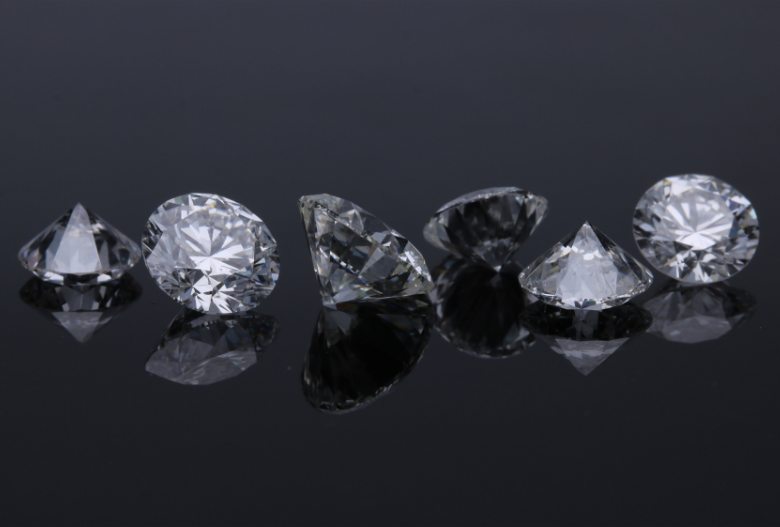
After the growth process, most CVD-grown diamonds require additional treatments, like heat or irradiation to improve their colours.
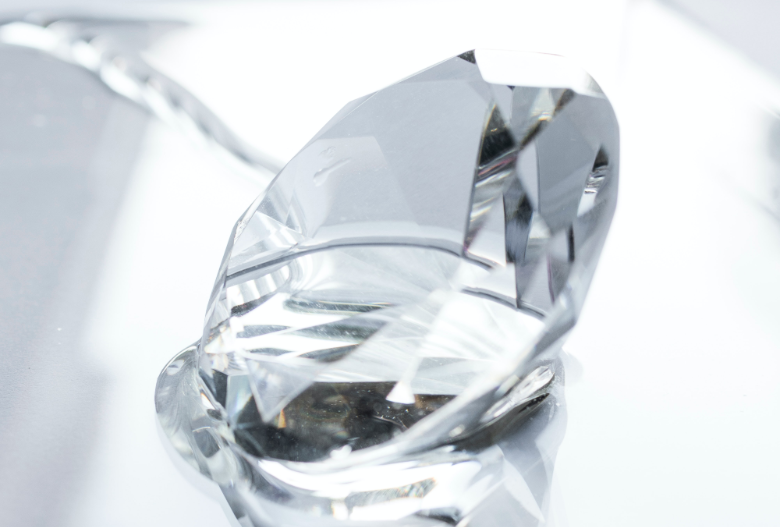
How They Compare
Image by De Beers Forevermark
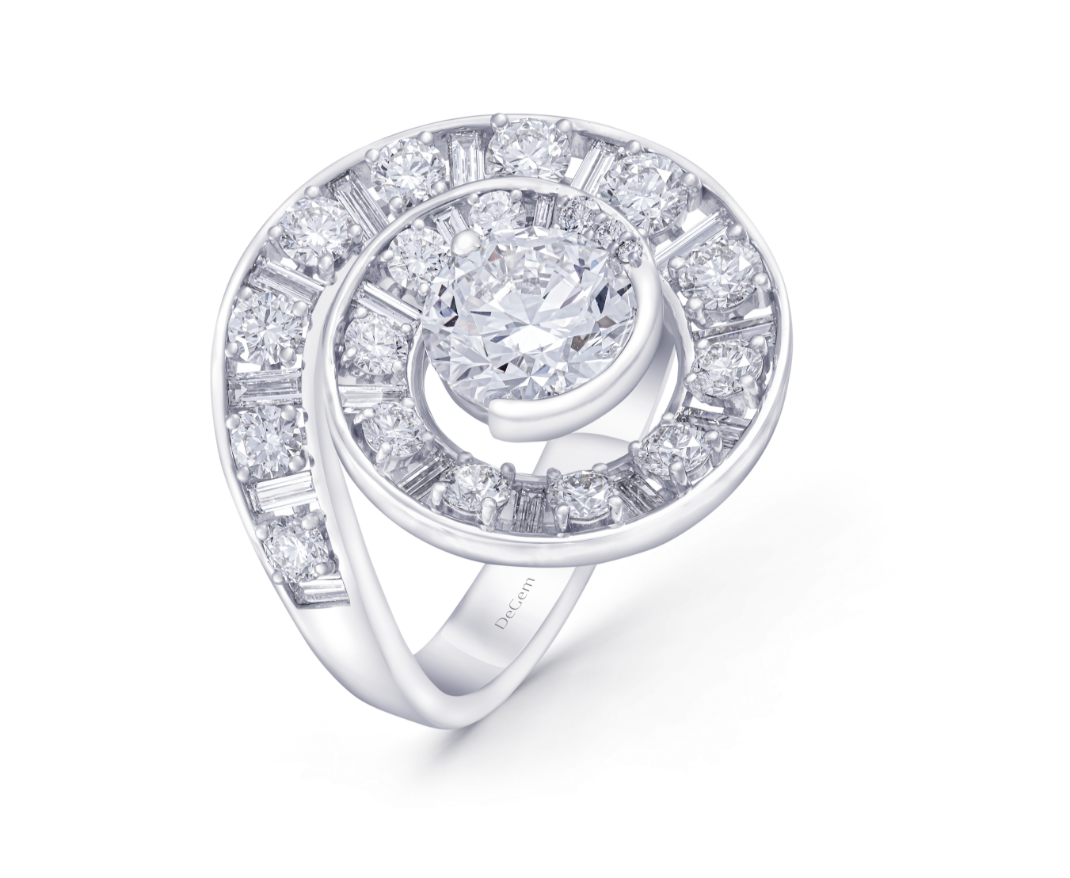
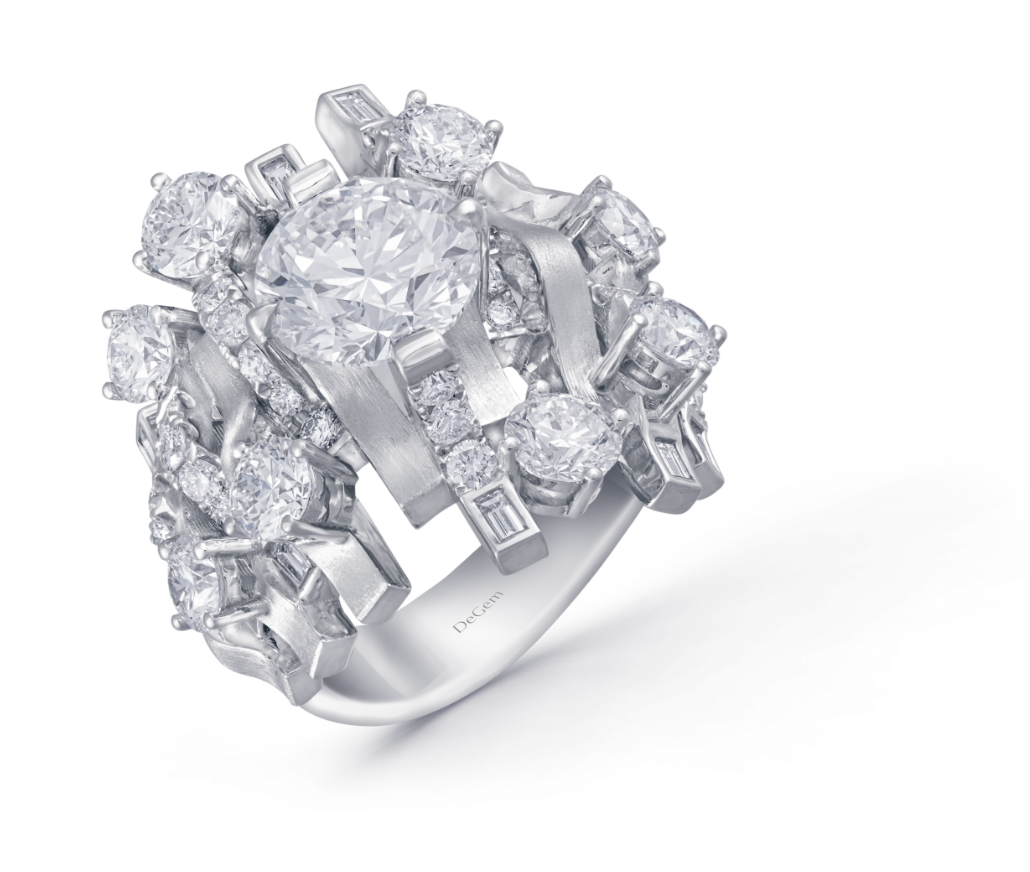
Be wary if the jeweller selling you the lab-grown diamond does not offer a buyback policy for the lab-grown diamond sold. This is an indicator of their non-confidence in the resale value of lab-grown diamonds.
A cautionary tale are diamond simulants such as moissanite and cubic zirconia (they sparkle like diamonds but are less hard than diamonds), when they were released in the market a century ago, prices were 30% of natural diamonds, but today they cost less than 1% of natural diamond prices.
The supply of natural diamonds are finite, so some day in the future when the supply of natural diamonds depletes, the value of natural diamonds will appreciate further. The larger a natural diamond is, and the better its 4C’s are, the rarer it is, which results in a good investment.
Ask your jeweller what their buyback/trade in policy is, to ensure the value of your natural diamond. It is common for happily married couples to trade in their natural diamond for an upgrade at milestone anniversaries. Natural diamonds have been traded for many years within the gem industry, their intrinsic value is more stable over centuries.
As a parallel comparison, lab-grown/synthetic rubies and sapphire have been available commercially in the market since 1800s. Today, as mining production of natural rubies and sapphires is diminishing, the value of natural rubies, and sapphires have appreciated steeply, while market demand for natural is far stronger.
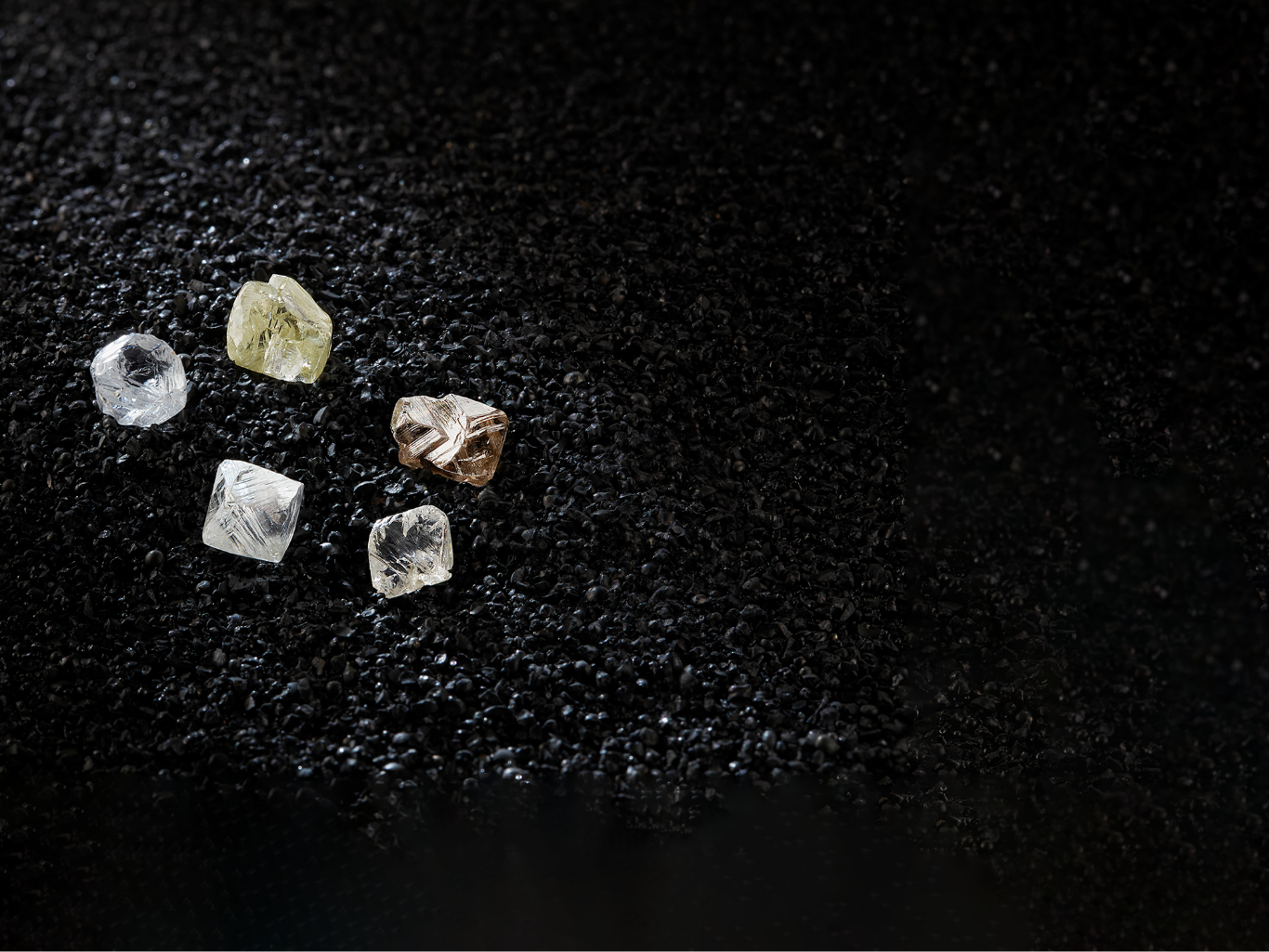
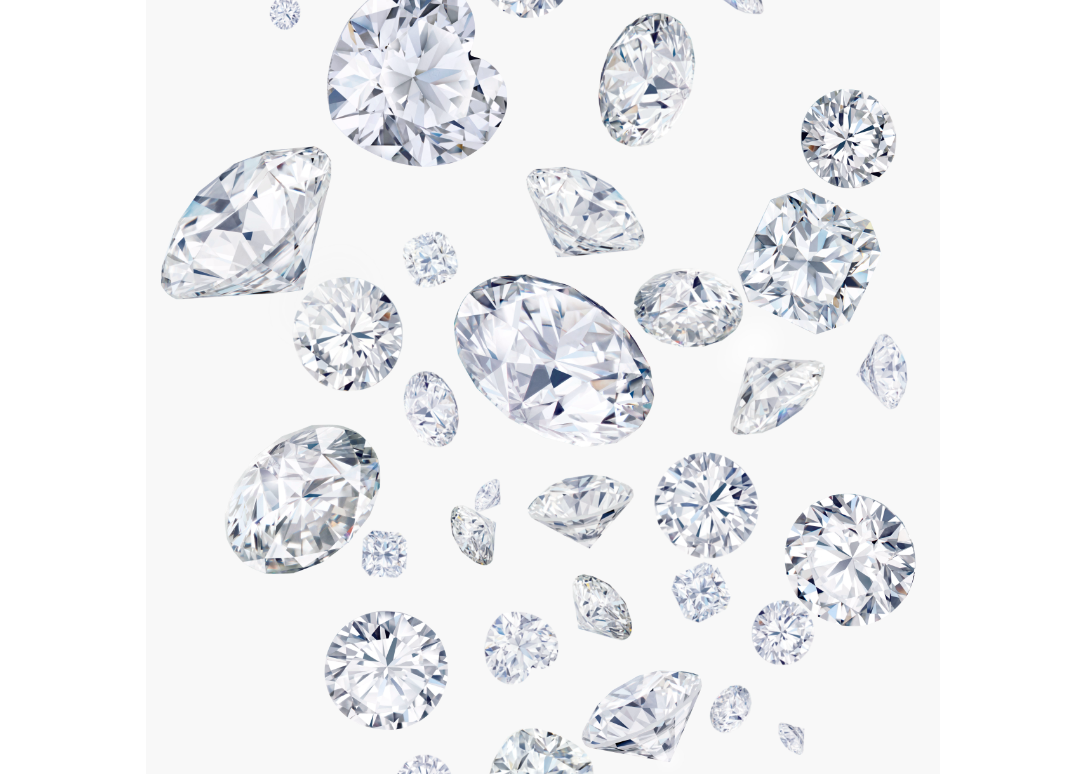
At DeGem, we have equipment to distinguish natural diamonds from laboratory-grown (HPHT and CVD) diamonds and diamond simulants.
Be sure to always check with any jeweller the certification/grading reports they provide for any stones sold, to authenticate the gem you are buying. This also ensures that you are not fooled by unethical jewellers who may not disclose whether they are selling lab-grown diamonds to you.
If possible, it is always better to view the stones you want to compare in person, because a diamond report cannot tell you what the diamond will look like in person. For example, a ‘same’ colour grade for a lab-grown versus a natural diamond may look different when placed side-by-side. Only compare diamonds graded by the same laboratory to ensure a fair comparison, as different laboratories may vary in terms of its stringency.
The chemicals and conditions required to power the production of synthetic diamonds still require massive amounts of energy and water. 511kgs of C02 are emitted per polished carat of lab-grown diamonds, while in comparison only 160kgs of C02 are emitted per polished carat of natural mined diamonds. C02 emissions of lab-grown diamonds are high as they have to heat their ovens to 1,500ºC, requiring large amounts of energy.
As for the natural diamond industry, much has changed since the Blood Diamond movie. There is a lot of work by governments from where natural diamonds are mined, to organise mining technology to enrich the lives of its citizens and communities.
In De Beers’ Botswana mines, they partner with the local government for profit sharing, and are committed to sustainable development by conserving wildlife safaris in the area, so that the livelihoods of the communities are taken care of even if one day the diamond mines deplete. Natural diamonds transformed Botswana “from one of the poorest countries in the world to a middle-income country” with revenues from mining representing almost a third of its GDP.
For South Africa and Russia, the natural diamond industry creates jobs for tens of thousands of its people. Diamond mining in South Africa alone employed over 16,000 people in 2018 — and taxes on diamond companies help build roads, schools and hospitals. As a result, a greater number of children in mining towns attend schools than in non-mining areas.
Diamond simulants are alternative stones that mimic the look of diamonds but do not share the same chemical
composition, physical and optical properties as diamonds. Diamond simulants can cost a fraction of the
price, but its durability or sparkle is not as strong as a diamond.
Diamond simulants include
cubic zirconia, moissanite, white sapphire, zircon, rutile, spinel, or synthetic garnet. Be sure to clarify
with any jeweller you are speaking to about the item offered, whether it is a lab-grown diamond or diamond
simulant, its colour, sparkle and price may vary vastly.
The Diamond Guide
What are Natural Mined Diamonds VS Lab-Grown Diamonds?
To date, diamonds are still the most sought after gem for engagement rings. For its amazing fire,
scintillation, durability and rarity, diamonds are the perfect symbol that true love is eternal, like a
promise from a man to his partner.
But what is the difference between a natural diamond versus a
lab-grown diamond?
Image by De Beers Forevermark
Natural Diamonds
Natural diamonds are formed deep within the earth’s surface more than a billion years ago, under extreme
temperatures (more than 1150ºC) and high pressure (45,000 times greater than at sea level).
These
natural diamonds remain deep within the earth for hundreds of millions of years, until volcanic activity and
magma transported them upwards towards the earth’s surface. Most diamonds are found in kimberlite pipes,
which are vertical rock formations that are remnants of ancient volcanoes.
Rough Diamond on black sand.
Image by De Beers Forevermark
Today, natural diamonds are mined in Russia, Botswana, South Africa, Namibia, Angola, Zimbabwe, Canada, and Australia. With modern technology, diamond mining is more organised and ethical in this day and age, enriching its surrounding communities with jobs and skills training.
Image by De Beers Forevermark
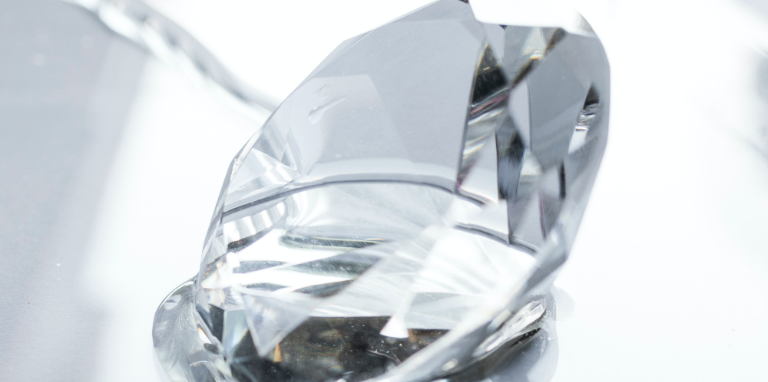
Laboratory-Grown Diamonds
Synthetic diamonds are also known as laboratory-grown diamonds, man-made diamonds, artificial diamonds, cultivated diamonds or cultured diamonds. They are grown in laboratories, and have the same hardness, chemical composition, crystal structure and physical properties as natural diamonds. They are not fakes, but they are not natural either.
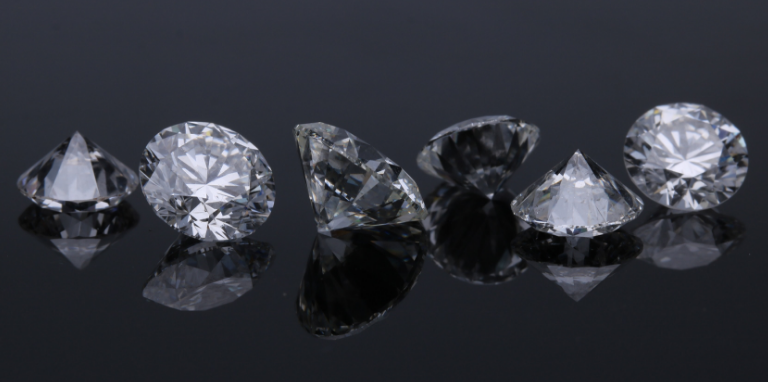
Lab-grown diamonds entered the gem and jewellery market in commercial quantities from around 2016, with
advances in technology. They can be grown in a matter of a few days to a few weeks, using one of two
processes: High Pressure, High Temperature (HPHT), or Chemical Vapor Deposition (CVD).
After the
growth process, most CVD-grown diamonds require additional treatments, like heat or irradiation to improve
their colours.
How They Compare
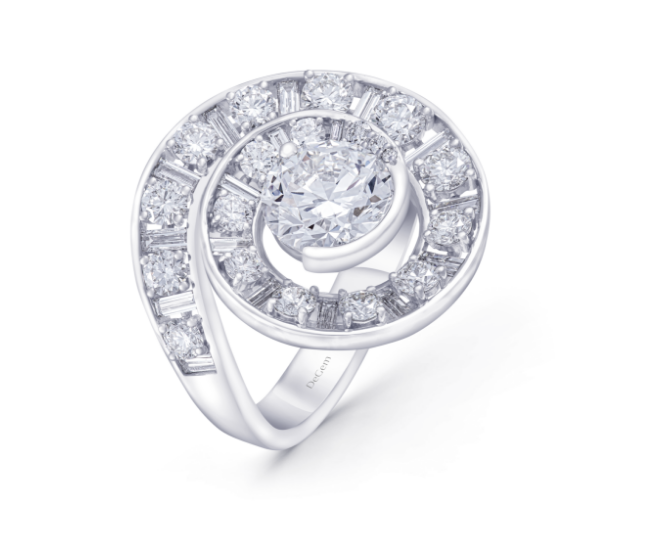
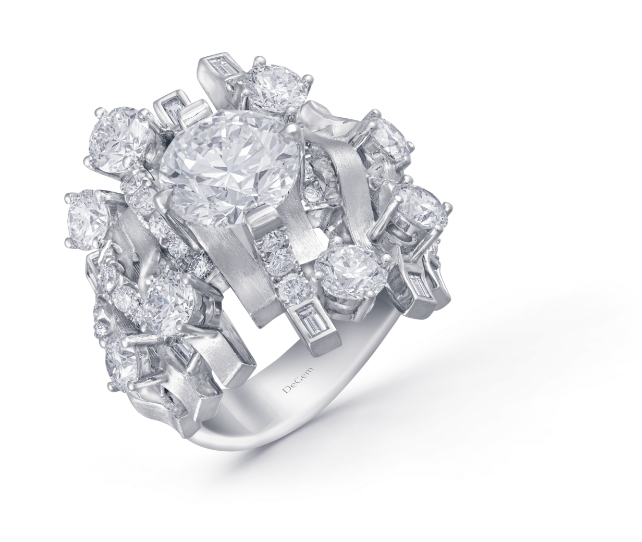
Lab-grown diamonds are also priced according to the 4C’s, and are 30% to 50% cheaper than natural diamonds at
the moment. As the technology improves and production ramps up, lab-grown diamonds prices are expected to
depreciate further. Because lab grown diamonds are mass-produced in batches and their supply is infinite, they
do not possess the enduring resale value of natural diamonds.
Be wary if the jeweller selling you
the lab-grown diamond does not offer a buyback policy for the lab-grown diamond sold. This is an indicator of
their non-confidence in the resale value of lab-grown diamonds.
A cautionary tale are diamond
simulants such as moissanite and cubic zirconia (they sparkle like diamonds but are less hard than diamonds),
when they were released in the market a century ago, prices were 30% of natural diamonds, but today they cost
less than 1% of natural diamond prices.
Engagement rings with natural gems serve a secondary function as heirloom pieces that you will pass on to your
next generations, a tradition widely practised by royal and aristocratic families. Like original and fake
paintings (though both look ‘real’), the store of value varies vastly when evaluated for resale or
auctions.
The supply of natural diamonds are finite, so some day in the future when the supply of
natural diamonds depletes, the value of natural diamonds will appreciate further. The larger a natural diamond
is, and the better its 4C’s are, the rarer it is, which results in a good investment.
Ask your
jeweller what their buyback/trade in policy is, to ensure the value of your natural diamond. It is common for
happily married couples to trade in their natural diamond for an upgrade at milestone anniversaries. Natural
diamonds have been traded for many years within the gem industry, their intrinsic value is more stable over
centuries.

Value is dependent on rarity. For natural diamonds, its rarity hinges on two tiers of difficulty when working with natural materials:
Because the supply of natural diamonds is finite, if you are able to hold on to a higher quality diamond in
colour, clarity, carat and cut, its value will appreciate over the years.
As a parallel
comparison, lab-grown/synthetic rubies and sapphire have been available commercially in the market since
1800s. Today, as mining production of natural rubies and sapphires is diminishing, the value of natural
rubies, and sapphires have appreciated steeply, while market demand for natural is far stronger.
The amount of processing to find supply of gem quality stones – Majority of diamonds mined are low quality industrial type diamonds, not suitable for jewellery. Typically, miners often process about a ton of rock to recover a piece of gem rough weighing half a carat, which might produce a faceted diamond half that size, or 25 points.
Larger, fine-quality natural diamonds with high clarity and good colour are still rarer to find - Around 100,000 tons of kimberlite may have to be processed to produce a single piece of rough to find and cut a 1 carat D Flawless diamond.
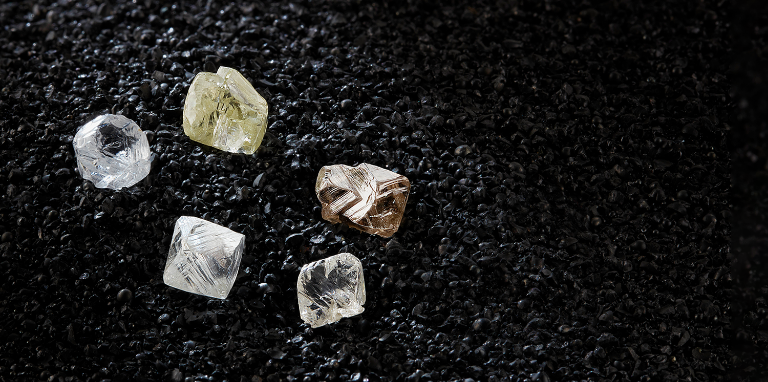
Some proponents may claim that lab-grown diamonds are made in a more environmentally friendly way, but there
is no substantial proof to date.
The chemicals and conditions required to power the production of
synthetic diamonds still require massive amounts of energy and water. 511kgs of C02 are emitted per polished
carat of lab-grown diamonds, while in comparison only 160kgs of C02 are emitted per polished carat of
natural mined diamonds. C02 emissions of lab-grown diamonds are high as they have to heat their ovens to
1,500ºC, requiring large amounts of energy.
As for the natural diamond industry, much has changed
since the Blood Diamond movie. There is a lot of work by governments from where natural diamonds are mined,
to organise mining technology to enrich the lives of its citizens and communities.
In De Beers’
Botswana mines, they partner with the local government for profit sharing, and are committed to sustainable
development by conserving wildlife safaris in the area, so that the livelihoods of the communities are taken
care of even if one day the diamond mines deplete. Natural diamonds transformed Botswana “from one of the
poorest countries in the world to a middle-income country” with revenues from mining representing almost a
third of its GDP.
For South Africa and Russia, the natural diamond industry creates jobs for tens
of thousands of its people. Diamond mining in South Africa alone employed over 16,000 people in 2018 — and
taxes on diamond companies help build roads, schools and hospitals. As a result, a greater number of
children in mining towns attend schools than in non-mining areas.
and lab-grown diamonds?
To the consumer, natural and lab-grown diamonds can be identical in appearance. But there are subtle
differences in their growth structure that can be detected by trained gemologists and sophisticated
equipment.
At DeGem, we have equipment to distinguish natural diamonds from laboratory-grown
(HPHT and CVD) diamonds and diamond simulants.
Be sure to always check with any jeweller the
certification/grading reports they provide for any stones sold, to authenticate the gem you are buying.
This also ensures that you are not fooled by unethical jewellers who may not disclose whether they are
selling lab-grown diamonds to you.
If possible, it is always better to view the stones you
want to compare in person, because a diamond report cannot tell you what the diamond will look like in
person. For example, a ‘same’ colour grade for a lab-grown versus a natural diamond may look different
when placed side-by-side. Only compare diamonds graded by the same laboratory to ensure a fair
comparison,
as different laboratories may vary in terms of its stringency.
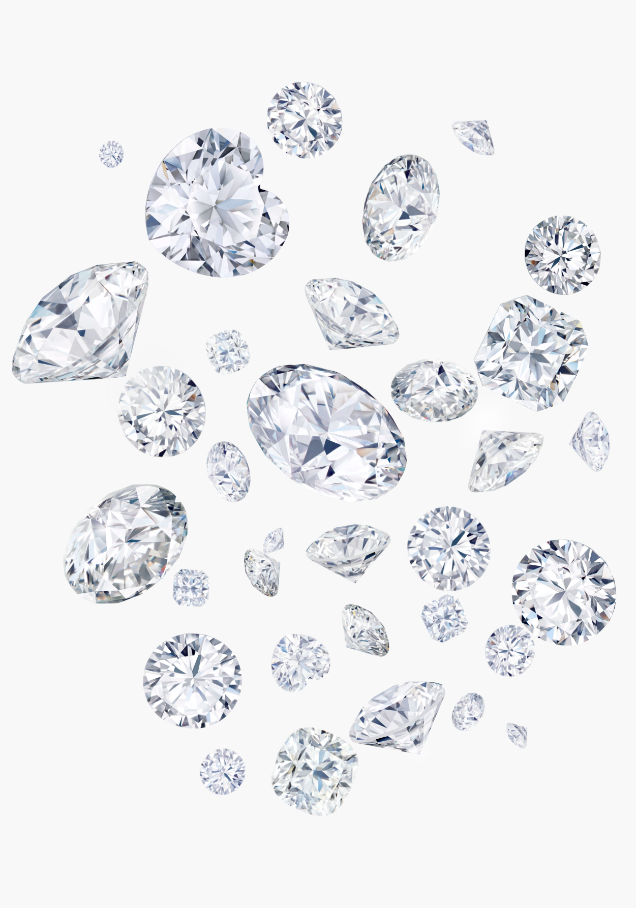
Diamond simulants are alternative stones that mimic the look of diamonds but do not share the same chemical
composition, physical and optical properties as diamonds. Diamond simulants can cost a fraction of the
price, but its durability or sparkle is not as strong as a diamond.
Diamond simulants include
cubic zirconia, moissanite, white sapphire, zircon, rutile, spinel, or synthetic garnet. Be sure to clarify
with any jeweller you are speaking to about the item offered, whether it is a lab-grown diamond or diamond
simulant, its colour, sparkle and price may vary vastly.
The Diamond Guide
What are Natural Mined Diamonds
VS Lab-Grown Diamonds?
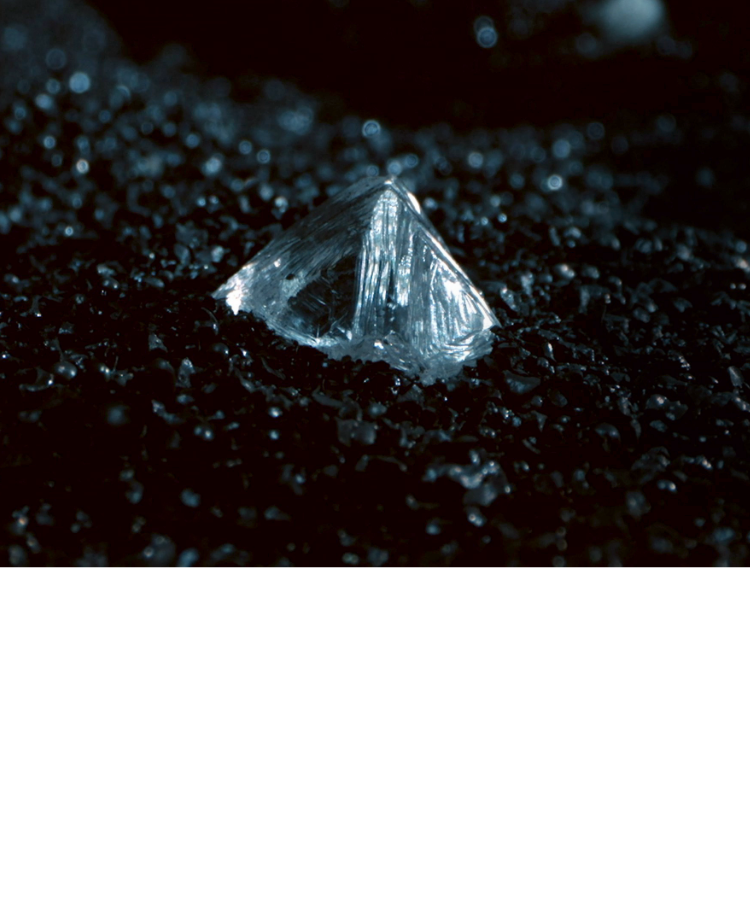
To date, diamonds are still the most sought after gem for engagement rings. For its amazing fire,
scintillation, durability and rarity, diamonds are the perfect symbol that true love is eternal, like a
promise from a man to his partner.
But what is the difference between a natural diamond versus a
lab-grown diamond?
Natural Diamonds
Natural diamonds are formed deep within the earth’s surface more than a billion years ago, under extreme
temperatures (more than 1150ºC) and high pressure (45,000 times greater than at sea level).
These
natural diamonds remain deep within the earth for hundreds of millions of years, until volcanic activity and
magma transported them upwards towards the earth’s surface. Most diamonds are found in kimberlite pipes, which
are vertical rock formations that are remnants of ancient volcanoes.
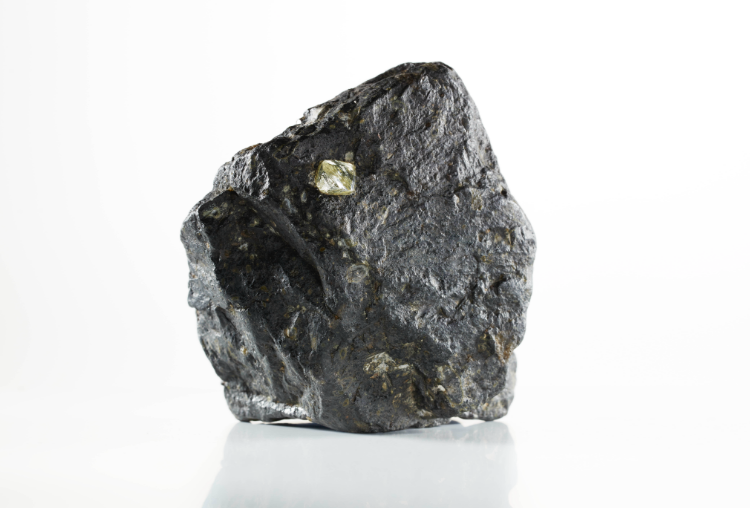
Rough Diamond Embedded in Kimberlite.
Today, natural diamonds are mined in Russia, Botswana, South Africa, Namibia, Angola, Zimbabwe, Canada, and Australia. With modern technology, diamond mining is more organised and ethical in this day and age, enriching its surrounding communities with jobs and skills training.
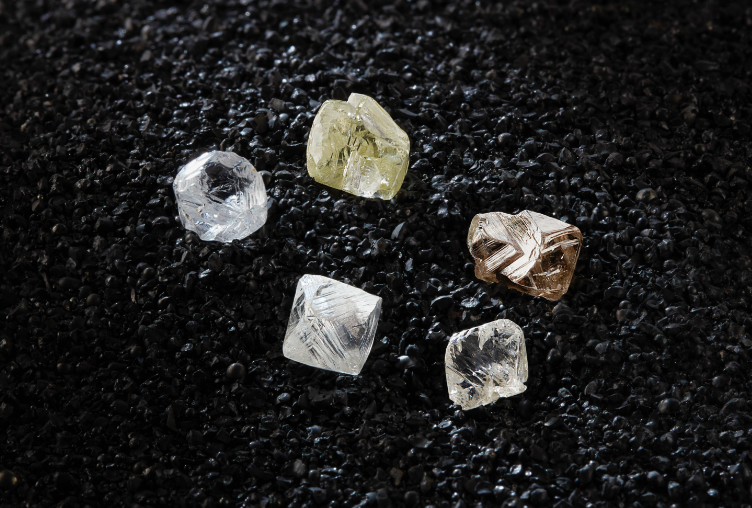
Rough Diamond on black sand.
Laboratory-Grown Diamonds
Synthetic diamonds are also known as laboratory-grown diamonds, man-made diamonds, artificial diamonds, cultivated diamonds or cultured diamonds. They are grown in laboratories, and have the same hardness, chemical composition, crystal structure and physical properties as natural diamonds. They are not fakes, but they are not natural either.
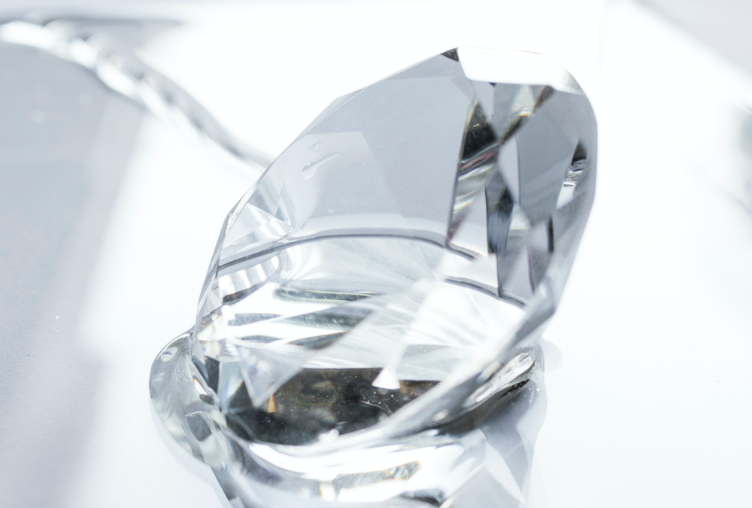
Lab-grown diamonds entered the gem and jewellery market in commercial quantities from around 2016, with
advances in technology. They can be grown in a matter of a few days to a few weeks, using one of two
processes: High Pressure, High Temperature (HPHT), or Chemical Vapor Deposition (CVD).
After the
growth process, most CVD-grown diamonds require additional treatments, like heat or irradiation to improve
their colours.
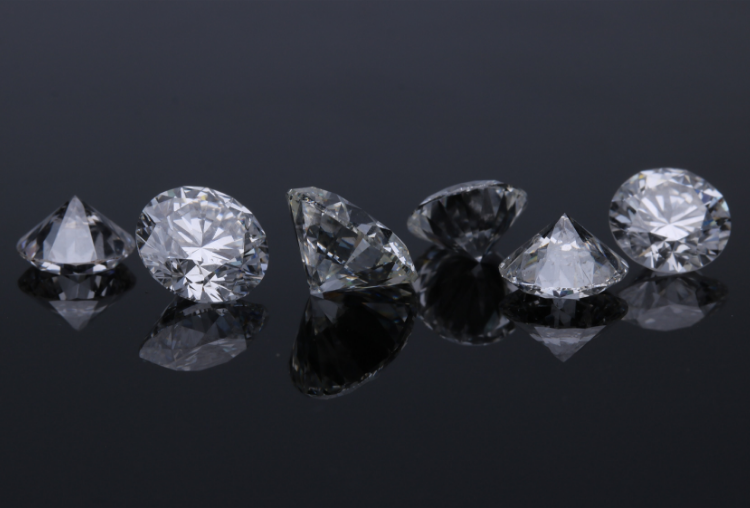
How They Compare
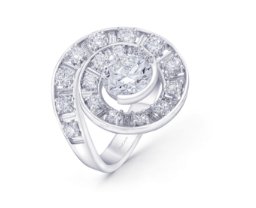
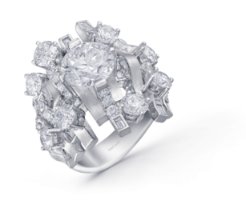
Lab-grown diamonds are also priced according to the 4C’s, and are 30% to 50% cheaper than natural diamonds at
the moment. As the technology improves and production ramps up, lab-grown diamonds prices are expected to
depreciate further. Because lab grown diamonds are mass-produced in batches and their supply is infinite, they
do not possess the enduring resale value of natural diamonds.
Be wary if the jeweller selling you
the lab-grown diamond does not offer a buyback policy for the lab-grown diamond sold. This is an indicator of
their non-confidence in the resale value of lab-grown diamonds.
A cautionary tale are diamond
simulants such as moissanite and cubic zirconia (they sparkle like diamonds but are less hard than diamonds),
when they were released in the market a century ago, prices were 30% of natural diamonds, but today they cost
less than 1% of natural diamond prices.
Engagement rings with natural gems serve
a secondary function as heirloom pieces that you will pass
on to your next generations,
a tradition widely practised by royal and aristocratic families. Like
original and fake paintings (though both look ‘real’), the store of value varies vastly when evaluated
for
resale or auctions.
The supply of natural diamonds are finite, so some day in the future when
the supply of natural diamonds depletes, the value of natural diamonds will appreciate further. The
larger
a natural diamond is, and the better its 4C’s are, the rarer it is, which results in a good
investment.
Ask
your jeweller what their buyback/trade in policy is, to ensure the value of your natural diamond. It is
common for happily married couples to trade in their natural diamond for an upgrade at milestone
anniversaries. Natural diamonds have been traded for many years within the gem industry, their intrinsic
value is more stable over centuries.
When you have a fair budget, it is always advisable to buy a natural diamond for your engagement ring, due to its store of value. Historically, the value of natural diamonds and gems have appreciated over decades and centuries.
Value is dependent on rarity. For natural diamonds, its rarity hinges on two tiers of difficulty when working with natural materials:
The amount of processing to find supply of gem quality stones – Majority of diamonds mined are low quality industrial type diamonds, not suitable for jewellery. Typically, miners often process about a ton of rock to recover a piece of gem rough weighing half a carat, which might produce a faceted diamond half that size, or 25 points.
Larger, fine-quality natural diamonds with high clarity and good colour are still rarer to find - Around 100,000 tons of kimberlite may have to be processed to produce a single piece of rough to find and cut a 1 carat D Flawless diamond.
Because the supply of natural diamonds is finite, if you are able to hold on to a higher quality diamond in
colour, clarity, carat and cut, its value will appreciate over the years.
As a parallel
comparison, lab-grown/synthetic rubies and sapphire have been available commercially in the market since
1800s. Today, as mining production of natural rubies and sapphires is diminishing, the value of natural
rubies, and sapphires have appreciated steeply, while market demand for natural is far stronger.
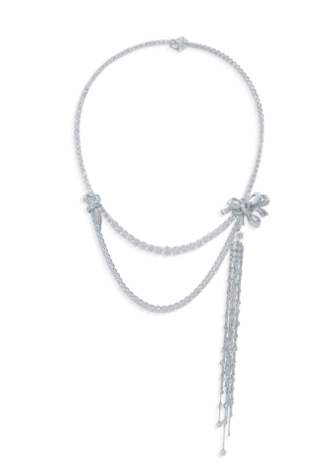
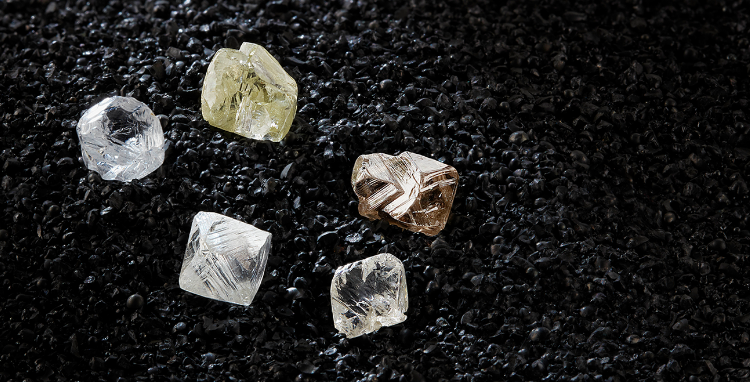
Environmental-Friendliness
Some proponents may claim that lab-grown diamonds are made in a more environmentally friendly way, but there
is no substantial proof to date.
The chemicals and conditions required to power the production of
synthetic diamonds still require massive amounts of energy and water. 511kgs of C02 are emitted per polished
carat of lab-grown diamonds, while in comparison only 160kgs of C02 are emitted per polished carat of
natural mined diamonds. C02 emissions of lab-grown diamonds are high as they have to heat their ovens to
1,500ºC, requiring large amounts of energy.
As for the natural diamond industry, much has changed
since the Blood Diamond movie. There is a lot of work by governments from where natural diamonds are mined,
to organise mining technology to enrich the lives of its citizens and communities.
In De Beers’
Botswana mines, they partner with the local government for profit sharing, and are committed to sustainable
development by conserving wildlife safaris in the area, so that the livelihoods of the communities are taken
care of even if one day the diamond mines deplete. Natural diamonds transformed Botswana “from one of the
poorest countries in the world to a middle-income country” with revenues from mining representing almost a
third of its GDP.
For South Africa and Russia, the natural diamond industry creates jobs for tens
of thousands of its people. Diamond mining in South Africa alone employed over 16,000 people in 2018 — and
taxes on diamond companies help build roads, schools and hospitals. As a result, a greater number of
children in mining towns attend schools than in non-mining areas.
lab-grown diamonds?
To the consumer, natural and lab-grown diamonds can be identical in appearance.
But there are subtle
differences in their growth structure that can be detected by trained gemologists and sophisticated
equipment.
At DeGem, we have equipment to distinguish natural diamonds from laboratory-grown
(HPHT and CVD) diamonds and diamond simulants.
Be sure to always check with any jeweller the
certification/grading reports they provide for any stones sold, to authenticate the gem you
are buying.
This also ensures that you are not fooled by unethical jewellers who may not disclose whether they are
selling lab-grown diamonds to you.
If possible, it is always better to view the
stones you
want to compare in person, because a diamond report cannot tell you what the diamond will look like in
person. For example,
a ‘same’ colour grade for a lab-grown versus a natural diamond may look different
when placed side-by-side. Only compare diamonds graded by the same laboratory to ensure a fair comparison,
as different laboratories may
vary in terms of its stringency.
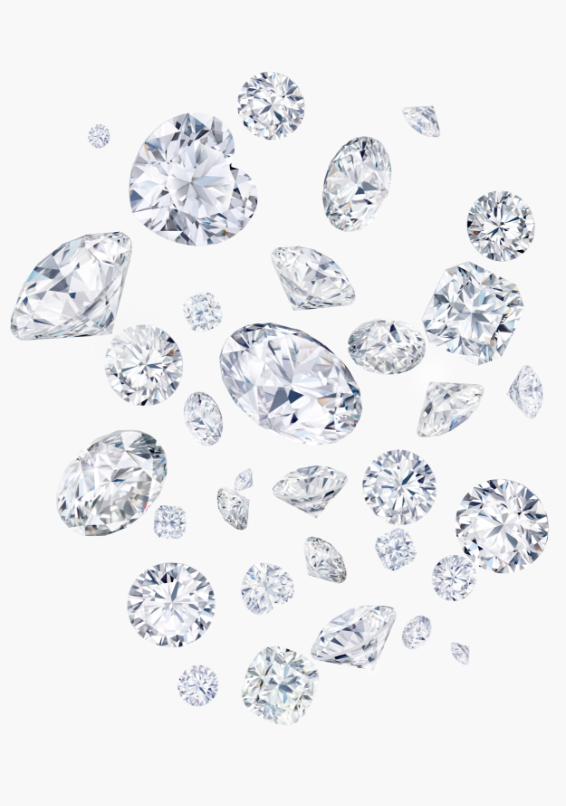
Diamond simulants are alternative stones that mimic the look of diamonds but do not share the same chemical
composition, physical and optical properties as diamonds. Diamond simulants can cost a fraction of the price,
but its durability or sparkle is not as strong as a diamond.
Diamond simulants include cubic
zirconia, moissanite, white sapphire, zircon, rutile, spinel, or synthetic garnet. Be sure to clarify with any
jeweller you are speaking to about the item offered, whether it is a lab-grown diamond or diamond simulant,
its colour, sparkle and price may vary vastly.